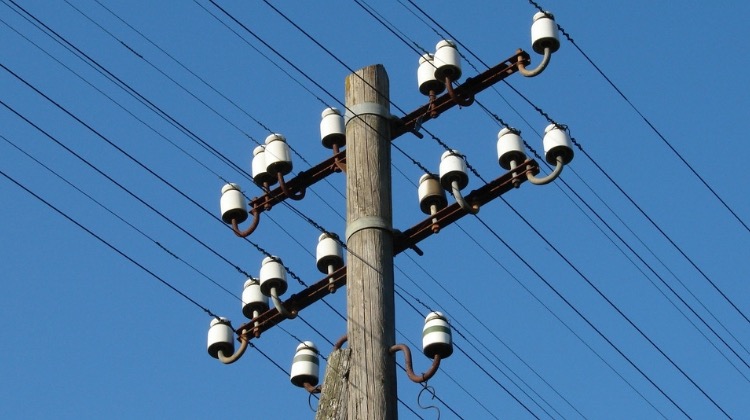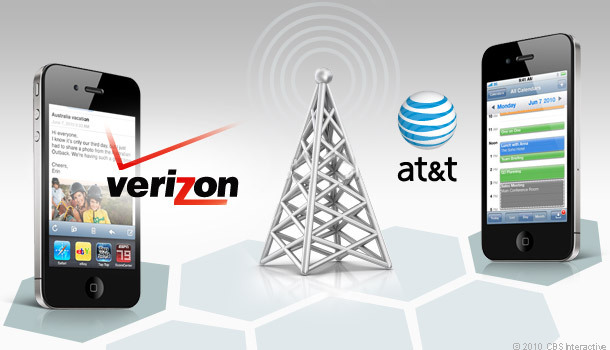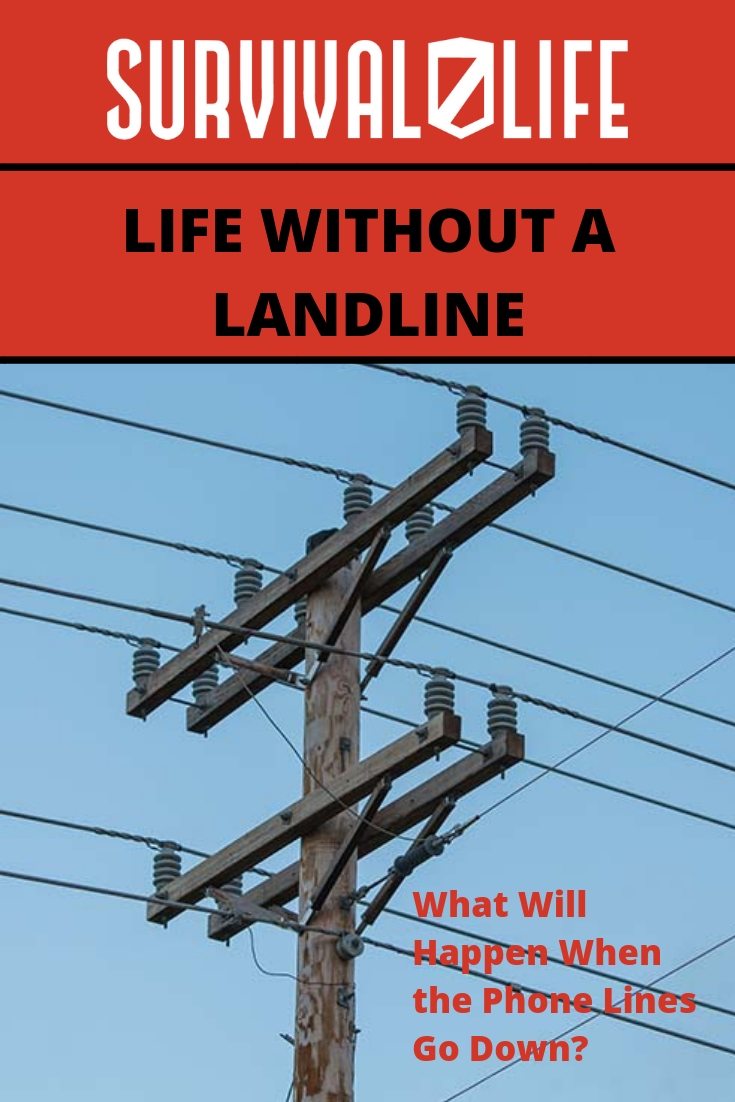opinion
Life Without a Landline

The copper landline is fast disappearing and there’s little you can do about it!
For over six years, the major telecom companies—AT&T and Verizon—have been pushing for customers to use fiber optic lines so they can shutter the Plain Old Telephone Service (POTS) copper-based infrastructure. And this has caused great angst and heated arguments across the country.
What Will Happen When the Phone Lines Go Down?
There are two schools of thought on the subject. One side says that technology has moved way beyond the old copper lines and into fiber optic and wireless digital communications. They say that fiber lines provide superior performance and battery backup can keep these lines alive for hours (8 to 24 hours depending on location).
Roots of the Controversy
Behind this controversy is a huge government-industry standoff. The federal government promoted and supported the development of the telecommunication revolution that brought phone service access to every American regardless of where they lived. To achieve this, copper telephone lines were strung coast to coast, and copper served us well for over a hundred years. And customers proudly bought Bell Telephone stock supporting these technology innovators.
However, government rules and regulations established restrictive conditions on how these companies could operate. The conflict between government and capitalistic interests forced phone companies to provide services to all regardless of location and cost. Over time, technology improved such that speed and quality enabled the fast, high-tech world we enjoy today. Adherence to supporting old technology is expensive, and telephone companies want to abandon such costly areas so they can focus on more lucrative profit centers. Maintaining an old technology became a financial drain on these companies because they can’t charge enough to cover costs and earn a profit.
But the technology that gave us the POTS copper phone lines still works—and it’s reliable when other power sources fail. But when does a nation decide it’s just too costly to keep using old technology?
What’s the Problem with Copper Lines?

(Image via)
Bell Telephone was broken apart and new companies (or at least new names) appeared. Today, the main telephone providers are AT&T and Verizon. Both are hamstrung by government regulations that require service guarantees to every American. The maintenance costs are huge, and both companies would like to abandon copper lines with analog phones and focus on more promising and profitable “high tech” digital products and services.
This is the issue. Copper lines are critical for a number of customers, and government regulation requires reliable communication capability for all. Fiber optic, Voice-Over-Internet Protocol (VOIP) and wireless technology gives us immediate improvements in speed of communication and quality of performance. Government regulators insist that POTS cannot be shuttered until a workable replacement is in place—where reliability and availability are guaranteed. This has been a challenge for the telecommunication industry. Guaranteed availability introduces substantial technological issues to moving the country forward into an all-digital format. Industry engineers introduced battery backup and emergency power generators, and these work well. The question is: for how long?
You can find dozens of online postings describing how copper phone lines with their analog capability made voice communication possible during power outages, and an equal number saying that text messaging still worked during power outage. Wireless capability almost always failed quickly. Wireless just isn’t a reliable asset during power outage. And communication during an outage is the key issue.
What Happens When the Power Goes Out?
Power outages worldwide average less than 8 hours for each incident—four hours is typical. But longer outages do occur—especially resulting from massive storms and weather-related phenomenon. In some areas power was out for months.
Telephone companies face daunting hurdles mixing analog and digital phone technologies. While the telecom industry tries to design a suitable replacement for copper phone lines, Congress is facing a need to overhaul the FCC Universal Service Fund which subsidizes landline subscribers so a level playing field exists for all telephone companies trying to upgrade the infrastructure.
These companies are lobbying state governments to end universal service guarantees so they can replace POTS with Internet-protocol (IP)-based systems using the same networks that now provide Web access, cable TV programming and digital telephone service. Over 30 states have agreed and people are being forced to go wireless.
As landline costs escalate and services decline, most homes are shifting to cell phones as the sole means of telephone communication. POTS evolved into the Public Telephone Switched Network (PTSN)—a system that interconnects telephone networks of all carriers. Since 1980 PTSN has used a digital backbone over fiber optic lines with copper lines carrying analog and digital signals for the last leg of the path into residences. The reality is that signals on these copper lines exist only as long as analog voltage is present. And this voltage depends on power being available at the digital-to-analog interface in the central or substation office. Backup power is assured only as long as generators can be fueled. Currently central offices have only a 7-day supply of fuel.
Should a catastrophic event occur—solar storm, bad weather, or terrorism—where multiple transformers are damaged or destroyed, electrical power on the grid could be out for days, weeks, or months. This is the risk we all face. An emergency backup gas-powered generator is of limited use if you cannot get more gas to refill the tank. If the pumps at gas stations are without electricity and trucks can’t deliver fuel, our whole society grinds to a halt. This could spark the disintegration of public order.
What would happen if a massive solar storm hit the earth? https://t.co/q2oC34Ad46
— Survival Life (@SurvivalLF) June 6, 2016
How You Can Prepare
As you review your survival plan and what you’ve done to keep heat, refrigeration, air conditioning, and lighting available, there’s one significant risk that still exists—the loss of fuel to keep generators going. If we can no longer get natural gas, propane, or gasoline, life as all of us know it will change significantly.
We need to encourage AT&T, Verizon and the FCC to quickly find a backup solution that works. This means joint collaborative efforts—not combative efforts.
In the meantime, I urge you to review the articles I’ve written on emergency communication (you can find the links below.) And revisit the idea of placing CB and shortwave equipment at all your family locations. Amateur radio can keep communication lines open and medical services in the loop. Life without copper landlines is coming. Get ready.

Emergency Communication by Voice
-

 Do It Yourself7 months ago
Do It Yourself7 months agoParacord Projects | 36 Cool Paracord Ideas For Your Paracord Survival Projects
-

 Do It Yourself9 months ago
Do It Yourself9 months agoHow To Make Paracord Survival Bracelets | DIY Survival Prepping
-

 Do It Yourself9 months ago
Do It Yourself9 months ago21 Home Remedies For Toothache Pain Relief
-

 Do It Yourself10 months ago
Do It Yourself10 months agoSurvival DIY: How To Melt Aluminum Cans For Casting
-

 Exports8 months ago
Exports8 months agoAre Switchblades Legal? Knife Laws By State








Pingback: Artificial Intelligence Takeover | How Likely It Is And How To Prepare | Primitive technology
Pingback: Artificial Intelligence Takeover | How Likely It Is And How To Prepare